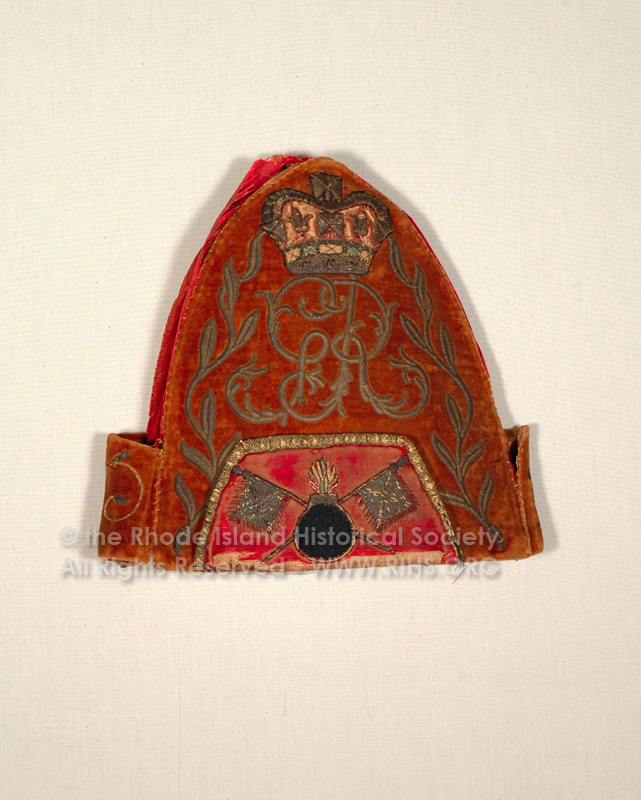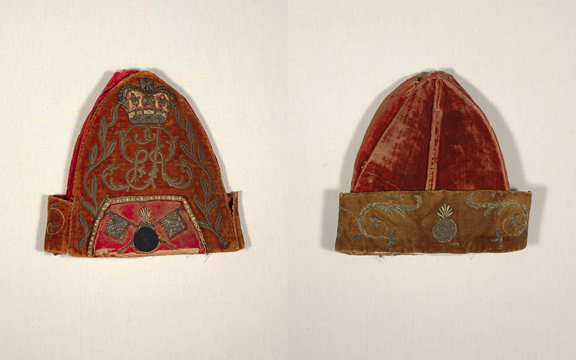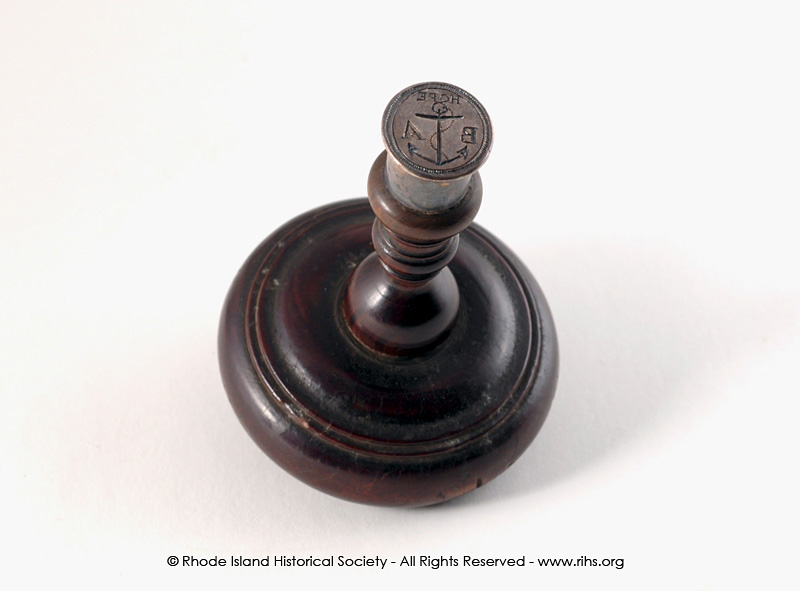
In the RIHS Museum collection, we have a very beautiful silk velvet cap that has puzzled me for some time: something wasn’t quite right, but I wasn’t sure what. The cap didn’t seem consistent with the story it came with.
It was said that the cap had been lost by a British officer of the 32nd Foot at the Battle of Bunker Hill in 1775. But even that was a little off: Rhode Island History published an article by Anne S. K. Brown in 1953 citing the work of Captain Cecil C. P. Lawson, an authority on British Army uniforms, and the article made clear that it was the 35th Foot.
But that wasn’t enough: the cap lacked the markers of standard British Army caps, despite the Royal Cipher: there were flags, but no white Horse of Hanover. And picked up from the field at Bunker Hill? The cap was the gift of John Howland, a Providence resident who fought in the Revolution and was prominent in virtually every aspect of Providence city life from the First Congregational Church to the Rhode Island Historical Society. Would Howland lie? It hardly seemed likely, and he was close enough to the events, even in 1833, that the story was worth examining.
I decided to start at the beginning, with the accession record book. And there I discovered that the cap was not given to the RIHS in 1833 by John Howland, but rather by Horatio Gates Bowen, physician and librarian of Brown University. And there was no story of Bunker Hill, just a note: “An old Grenadier’s cap, of a British Officer.”

Henry Cooke IV of Historic Costume Services examined the cap recently and thought that the “miter cap pre-dates the Royal Order of 1747 and the Royal Warrant of 1752 that codified the appearance of these caps to include the white Horse of Hanover on the flap. Also the lower height of the front panel seems consistent with what we can see of some of the early grenadier caps, especially those of the militia and those of Provincial origin.”

Although questions remain, eliminating the Bunker Hill story and straightening out part of the provenance will help us better understand—by starting from a better place—what this cap might signify. And questions are always fun to answer!
~Kirsten Hammerstrom, Director of Collections

One thought on “Object Thursday: Not at Bunker Hill– A British Officer’s Cap”